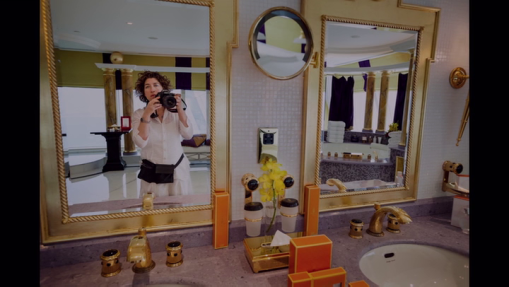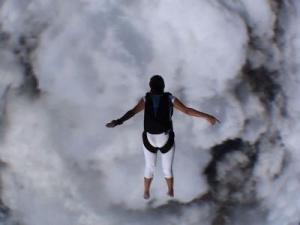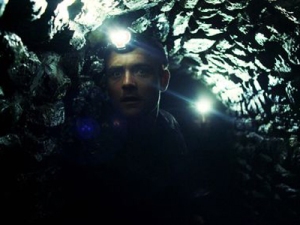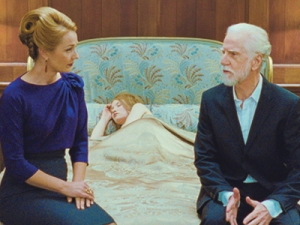
Lauren Greenfield’s latest work, Generation Wealth, finds her taking a plunge into a world of excesses, a culture obsessed with wealth, youth, beauty, sex, and power – permanent fixtures in her work as a photographer. Re-purposing material from her projects of the past thirty years, she reflects on the West’s continued fascination with having more, while also trying to understand her own fascination with this ideal. Generation Wealth is therefore a self-curated retrospective of sorts, a self-psychoanalysis, that brings into conversation topics as varied as high lifestyle of celebrity kids, eating disorders, plastic surgeries, new billionaires of the Communist world, pornography and the economic recession. While some of the connections seem strained and forced into a narrative, Greenfield’s conviction that these phenomena cannot be seen in isolation is admirable. Assembled using photographs from her previous projects and new interviews with the same subjects today, Generation Wealth weaves a Christian narrative of temptation, sin and redemption, complete with a pat message at the end.
A visual anthropologist by training, Greenfield admits that her method consists of documenting extreme examples in order to understand the mainstream. Through her VIP access to celebrity life (she comes in a line of Harvard graduates and went to the same elite schools as some of her subjects), she assembles a veritable freak parade of lost souls: a bus driver who went beyond her means for her plastic surgeries, a vulgar trader who was pursued by the FBI for fraud, a star-kid from LA who took to drugs, a toddler from the hinterlands who was catapulted to national fame, a stock broker who’s trying to conceive through IVF, a porn star who’s been through the unimaginable. Greenfield unveils their testimonies in bits and pieces and we are not sure until the end about what their current situation in life is. This withholding of information creates an unsavoury suspense that cheapens the investigation.
Greenfield has the unenviable knack of picking up the corniest lines from her interviews. She uses the most unflattering camera and editing choices, constantly undercutting her interviewees to make them look sorry or stupid. Subjects and authorities are clearly differentiated and grand-sounding theories about fame and money abound. We hardly get to hear from “the other side” without a judgment tacked on and this un-dialectical approach is aggravated by Greenfield’s simplistic association of words and images (capitalism + flashy disco lights). Having shown her interviewees’ failings, Greenfield proceeds to redeem them all by crosscutting their present-day situation – all of them having grateful meals with their children, choreographed for the camera – enshrining parenthood as the primordial purpose of life.
Of course, all this exploration brings Greenfield back to herself. In a criticism that’s actually complimentary, she equates her own workaholism with her subject’s fixation with more and more. In extended interviews with her parents and children, she meditates on the burden of legacy and the history of parental neglect as a source of success-obsession. There’s a shade of tragedy in that Greenfield is able to relate to her children only through her work and here she appears to be coming to terms with her anxieties about her own history as a mother. In a final scene reminiscent of JR’s Women are Heroes, her interviewees come to her new photo-exhibition (of which this film is an offshoot). They look back condescendingly on their younger selves, thankful for Greenfield for reminding them where they are from. The line between personal art and narcissism is thin and Generation Wealth often mistakes the latter for the former.

With Everybody Knows, Asghar Farhadi returns to Europe, this time to Spain whose harvest-season sun illuminates this story of open secrets and family intrigues. The setting also enables Farhadi to linger on some curious social rituals and gestures. Penelope Cruz’s Laura returns from Argentina with her teenage daughter for the wedding of her younger sister in Spain. Her birthplace is a medieval town with cobbled streets where her once land-owning family has been living for generations. Living in the same town is her old flame Paco (Javier Bardem) who manages the vineyards he once bought from Laura at a difficult time. While tensions in the family are visible even before the lovingly-shot wedding set-piece, the whole fabric unravels when Laura’s daughter goes missing on the night of the wedding. The audience constructs the characters’ history and their relationships piece by piece like a jigsaw puzzle, and the final image becomes clear only when the plot resolves itself.
Farhadi’s films are thrillers that are also character-studies, and Everybody Knows is no exception. Like its predecessors, it builds leisurely towards the crucial event that causes the characters to reassess their relationships with each other. Laura’s family resents her coming to the wedding without her husband and when her daughter vanishes it releases their long-suppressed resentments towards each other: Laura’s father brawls with neighbours who took his land in a game of poker thirty years ago, her sister confronts Paco for having short-changed Laura on the purchase of the vineyards, Paco’s wife objects to his taking so much concern for his old love, Paco detests Laura’s husband for his fake religiosity, Laura’s brother-in-law suspects her husband who hasn’t helped him despite being well-off. All the suppositions the characters make as to who might be involved in the kidnapping appear valid at first glance but are contradicted by subsequent developments. It’s to the plot’s credit that it doesn’t cheat the audience when it finally does reveal the details. And Farhadi’s anti-tourist approach to locales keeps outdoor scenes to a minimum.
On the other hand, Everybody Knows doesn’t have the same tragic weight as Farhadi’s other films. As it acknowledges right away, the secret at the heart of the film is really no secret and there’s no sense that the events would’ve turned out differently had the characters chosen to treat this piece of information differently. The real prime mover of the plot is the financial strain on the family and that dilutes the force of this melodrama given its focus is elsewhere. Moreover, the characters are related to each other through details of individual history and, except for Paco’s whose class pedigree is brought up, there’s no social friction palpable either despite the fact that part of the film involves the vineyards and the workers. There’s a feeling that, notwithstanding the revelations and outbursts, there is still so much to be discovered about the characters. That nobody really knows. As is usual for Farhadi, the actors carry the bulk of the film’s signifying burden and Barden and Cruz are always interesting presences. Mention must be made of the perversity of picking up the most beautiful people in the world and running them through less-than-beautiful situations: a dishevelled, frazzled Bardem in shorts sitting on his bed watching videos with earphones, a sleep-deprived Cruz lying face-down for an injection to the derriere.









